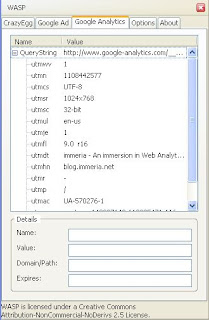While others are celebrating thousands of comments and feed subscribers (bravo Avinash!), I can only celebrates 20 years of career and my 100th blog post! So here's my story :)I can't tell exactly when I first got hooked on web analytics.
In 20 years, I touched the keyboards of many computers... in many companies, small and large, startups and bought up, played with more bad managers than good ones. That all started way back in 1987.

I remember, what now seems to be a very long time ago, when I was a freelancer at
Hydro-Québec (1991-1994). I would fetch loads of data stored in Oracle databases, analyze them and present statistical results about water levels and temperature in the form of trends and histograms. I even worked for a while on real time visualization of dam instrumentation controls. You know, huge dams are full of instruments: humidity, inclination, temperature, pressure, etc. We would call "live" and fetch real-time data. As an Oracle DBA, a Sun system administrator, and a C developer, this research project got me early to a new universe: the Internet (1992).
Side note #1: This was before Microsoft historical shift to embrace the Internet (remember Blackbird? the proprietary MSN BBS editor). At that time, myself a BBS moderator and web developer, I was wondering why the hell MS didn't use it as a Web page editor and shift MSN from a proprietary BBS to a full-fledged Web site... couple of weeks later... the rest is history. Too bad I didn't write that famous email to Bill!
The discovery of smtp (mail), irc (chat), nntp (news), and soon after, http (web!), got me into the world of
hacking (in the purest sense of the term). This raised some eyebrows at
Softimage, just bought by Microsoft, and I was hired to implement the anti-piracy mechanism into their high-end animation software. At night I started to build their
first web site and had to convince management there was some benefits! I used log file analyzers written in
perl to count the number of hits to our
Netscape Web server.
WebTrends came along. We could tell cool stuff about "impressions", "visits" and "visitors"! We could easily see what was popular and where people came from!
Side note #2: I remember when Pizza Hut offered one of the first ecommerce site: pizza delivery! People were skeptical, this was cool, but reserved to a elite few living near Santa Cruz. Or when we had to send an email to Jerry or David and kindly ask them to add our site to their Yahoo index.

In 1999 I moved on to
Bombardier and I loved building the monthly reports and seeing if
Ski-Doo or
Sea-Doo was performing better than the previous month. I was still the tech guy... but I could use those numbers, explain them to the marketing and communication people, and make the links between the technology, the Web, and the business objectives. I could even use
LiveStats (what will soon become Microsoft Gatineau) and see the results almost in real time, and use
ipMonitor to make sure the whole infrastructure was working correctly. I was now involved in serious B2B, B2C experiments going on right at the tipping point of the Internet bubble, and eventually, to the consolidation and revamp of a dozen web sites.

Those years were the "
Internet World" years. Each conference would bring a new buzz: managing email, commerce on the Web,
VRML, push technology (remember
PointCast), cool new stuff such as streaming... That's where I met
Jim Sterne for the first time, he was already talking about unique marketing strategies for the Internet.
Late 2004, as a web architect, I had the opportunity to develop the web analytics practice at
Nurun, a web agency with clients such as
EuroDisney,
Club Med,
L'Oréal, the
Royal Canadian Mint, and many more ranging from publishing to high value brands and ecommerce. Only two years ago few companies took the field of web analytics as seriously as today. Most of them were still talking about reports, thinking about page views and visits. It almost seemed as I was back in the early days of the Web, having to convince everyone it was so important.
I'm now much more involved in web analytics. It's a small part of my job as a senior architect at
Desjardins General Insurance, it's the focus of several of my
ebusiness MBA coursework, and I've been organizing local
Web Analytics Wednesday's for a few months. I'm also grateful that my employer, named one of the
best employer to work for in Canada and #1 in Québec, allows me to share my interest and recognize the value of web analytics as an essential element of a serious Internet presence. This field of expertise also opens a world of interesting topics, ranging from marketing strategies to site optimization, SEO, A/B and multivariate testing, Web 2.0 and ethical or legal issues, and many more.
But ultimately, my passion for web analytics, as strange as it may seem, stem from my interest to understand how human behavior is being transformed by the Internet. And one of the most interesting side effect of my involvement in this community are the links that are being made with very bright people everywhere around the world.




 I remember, what now seems to be a very long time ago, when I was a freelancer at
I remember, what now seems to be a very long time ago, when I was a freelancer at  In 1999 I moved on to
In 1999 I moved on to  Those years were the "
Those years were the "